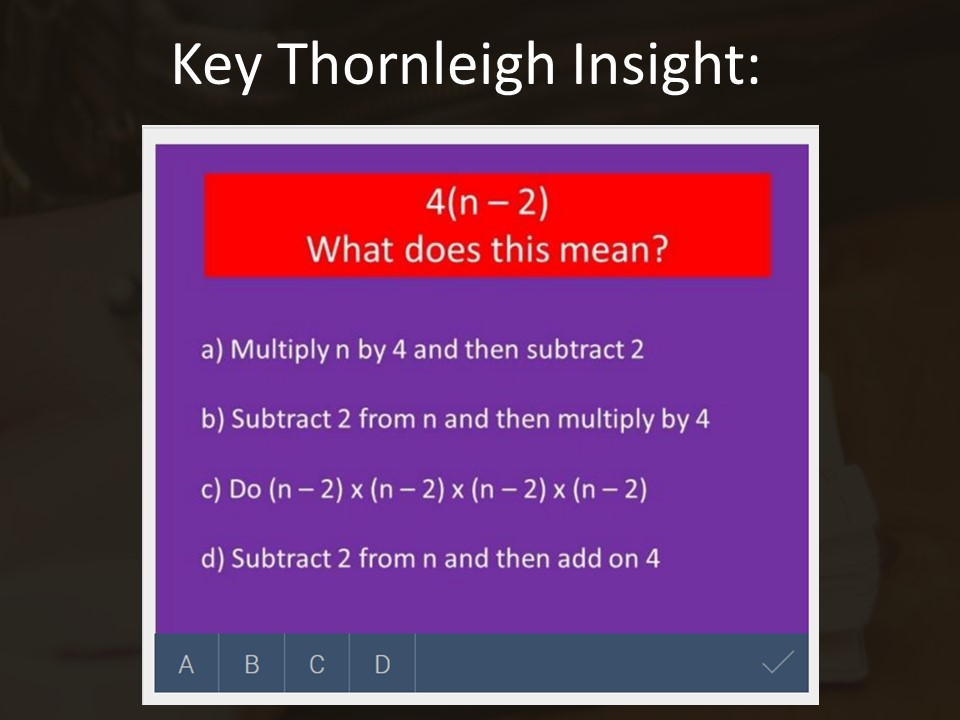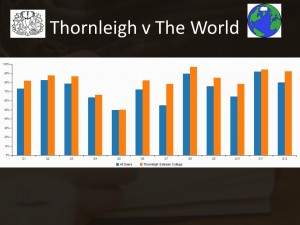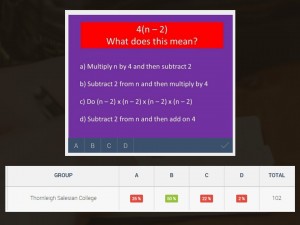What misconceptions do students have when it comes to understanding and interpreting algebraic expressions?
Essential Quiz 9 is officially the best answered GCSE Essential Skills Quiz in history! There was a success rate of 73% across the whole country, and 77% in our school. Does this mean we can all sit back, relax, and wait for an award-winning set of results in August?… not quite! The results of the quiz, and specifically the explanations provided by the students, are still throwing up some fundamental misconceptions that need tackling now. In this instance, they are not as wide scale as in previous quizzes, but discussing the answers with the students invovled could make a world of difference to their depth of understanding of these essential topics.
Moreover, there was one particular question that caught out a significant proportion of the nation’s students!
Quiz 9 is below, followed by an analysis of the Insight of the Week. Looking at the questions in the quiz, can you guess what the worst answered questions were?
Here’s how our students performed compared to the rest of the world:
Our students struggled a little with factorising quadratic expressions and naming types of angles in parallel lines (I do wish examiners would accept z-angles!). But we really came a cropper with understanding algebraic expressions:
Only half of our students got this question correct, with options A and C tempting many of them. Before reading their explanations, can you guess why students may have gone for each of the incorrect answers?
Essential Skills Quiz 7 threw up a misconceptions students had when it came to writing an algebraic expression to represent a specific situation. Here we have something related. Can our students correctly interpret what 4(n – 2) means? Well, it is clear from the responses that not all of them can, and crucially they have very different reasons for getting the question wrong.
Let’s take a look:
Incorrect Answer A (26% of our students chose this)
Students choosing this answer are displaying a sound knowledge of each of the operations involved, but a lack of understanding of the order of these operations. They are likely to be the same students who forget to multiply the -2 at the end by 4 and end up with an answer od 4n – 2. This is very clear from their explanations:
“when the number is outside the brackets you multiple what is in the brackets and so you multiply n by 4 and then subtract 2”
“I think its this because you multiply n by 4 at the start.”
A special mention should also be made of the following answer.
“should it not be 4n – 8?”
This, of course, is perfectly correct. I will be using this explanation in class as a challenge to my students to convince me (and their fellow students) why 4(n – 2) and 4n – 8 are the same thing.
Incorrect Answer C (22% of our students chose this)
Here we have a different misconception. Students choosing this answer are indicating that they do not know what the 4 does in this expression. Or, more accurately, they know the 4 means “multiply”, but they think this is equivalent to multiplying the whole expression by itself four times.
“you times everything in the brackets by the number / letter on the outside”
“as that is what the sum would look like if it was broken down”
Once again, we have a particularly interesting explanation:
“4(n-2) = 4n – 8 = n-2 x n-2 x n-2 x n-2 x n-2”
This will once again be thrown over as a challenge to my students: “how would you help this student understand this topic better?”.
Incorrect Answer D (2% of our students chose this)
Not many students went for this option, but here we see the first mention of BIDMAS – suggesting students are aware that the order of operations matters, but do not understand the role of the 4:
“Because you do the brackets first”
“Because bidmas”
The Correct Answer!
One of my motivations for developing Diagnostic Questions was so that students all around the world could learn from each other. When your students finish a quiz, please encourage them to review their answers, reading through other students’ explanations, until they find the magic one that makes sense to them. And just as importantly, please encourage your students to write good explanations – they will be improving their own understanding and helping out students from all around the world. Each time their explanation is liked, they will be notified and score valuable points on the site. So, what are our Year 11 students’ favourite correct explanations to help them resolve their own misconceptions?
“because in BIDMAS brackets come first and then if the number is directly infront of the brackets with no symbol (such as addition or minus) then it is multiply”
“bidmas. Brackets are first before multiplication so it is 4 times whatever n-2 is”
And possibly my favourite:
“’cause BODMAS rules.”
Tackling the Misconception in Class
Each week we discuss the Insight of the Week in our Monday Maths Departmental Meeting and try to come up with strategies for tackling it when we next see our lovely Year 11 classes. Here are a few suggestions we came up with, depending on which particular misconception our students had:
- Much of the discussion revolved around whether fewer students would get the question incorrect if presented as simply as: expand 4(n – 2). This may be true. However, an inability to understand algebraic notation and the order of operations, and crucially an inability to explain and communicate what this means may well catch out current Year 11 students, but it is my belief that it will be even more important for current Year 9s and Year 10s who will be taking on the more challenging new GCSE. From the Sample Assessment Materials, it is clear that there is a greater emphasis on the need for students to explain, criticise, justify, etc, and hence their understanding of topics including algebra will need to be more secure. My advice: try the question out on your Year 9s and 10s!
- Some colleagues suggested always expanding brackets using a grid method to ensure that students do not forget to multiply by the two. I do this for double-brackets, but perhaps I need to do it for single brackets as well
- In order to address the misconception revealed by answer C, one colleague suggested drawing 4 bubbles, each containing a (n – 2) in order to convey the difference between adding and multiplying.
Please add any extra ideas in the Comments section below!
The series of GCSE Essential Skills Quizzes are available here and will always be completely free.
Quiz 10 is available here
I hope these quizzes will prove useful to help your students develop the essential skills necessary for success at GCSE, and aid your teachers gain a deeper understanding of how your students learn.


